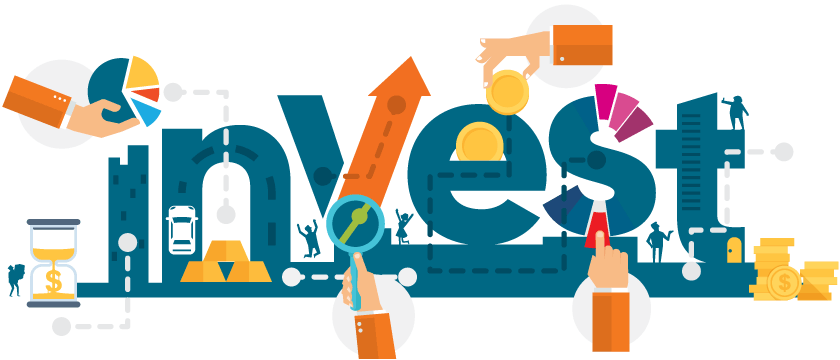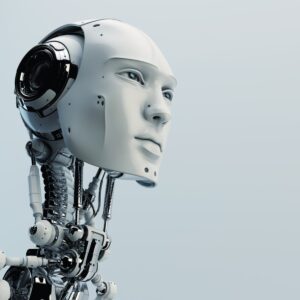Best Application of Artificial Intelligence And Machine Learning In The Field Of Robotics 2021
Before we get started with this topic, first we should talk about Artificial intelligence and machine learning and what these topics have to do with Robotics and Applying Artificial Intelligence And Machine Learning In The Field Of Robotics
Concept of Artificial Intelligence and Machine Learning in Robotics :
The fusion of artificial intelligence (AI) and machine learning (ML) with robotics has revolutionized the field, empowering robots with intelligent capabilities. This synergy enables robots to perceive, learn, adapt, and make decisions autonomously. In this article, we will explore the concept of AI and ML in robotics, highlighting their transformative potential and their applications across various industries.
Understanding Artificial Intelligence and Machine Learning in Robotics: Artificial intelligence in robotics refers to the integration of intelligent algorithms and technologies that enable robots to mimic human-like cognitive functions, such as perception, reasoning, problem-solving, and decision-making. Machine learning, a subset of AI, equips robots with the ability to learn from data, recognize patterns, and improve performance over time without being explicitly programmed.
Perception and Sensing: AI and ML play a crucial role in enhancing robots’ perception and sensing capabilities. Advanced sensors, such as cameras, LIDAR, and depth sensors, coupled with AI algorithms, enable robots to analyze their surroundings, detect objects, recognize patterns, and make sense of complex environments. These perceptual abilities empower robots to navigate, interact, and manipulate objects in real-world scenarios.

Autonomous Decision-Making: AI and ML algorithms empower robots to make autonomous decisions based on real-time data analysis and learning from past experiences. By utilizing reinforcement learning techniques, robots can learn optimal actions and strategies in different situations. This enables them to perform tasks with greater efficiency, adaptability, and even handle dynamic environments where human intervention may be challenging.
Collaboration and Human-Robot Interaction: AI and ML in robotics facilitate effective collaboration and interaction between humans and robots. Natural language processing enables robots to understand and respond to human commands, enabling seamless communication and cooperation. Machine learning algorithms can also be employed to learn and predict human behavior, allowing robots to anticipate human intentions and respond appropriately.
Industry Applications:
Manufacturing and Industrial Automation: AI and ML in robotics have transformed the manufacturing sector by enabling advanced automation and intelligent robots. These robots can perform complex tasks, such as assembly, quality control, and material handling, with precision and speed. The integration of AI and ML algorithms optimizes production processes, minimizes errors, and enhances productivity in industrial settings.
Healthcare and Assistive Robotics: In healthcare, robots equipped with AI and ML capabilities are assisting in various tasks, such as surgical procedures, patient monitoring, and rehabilitation. AI-driven robotic systems can analyze medical data, provide real-time feedback, and support medical professionals in diagnosis and treatment decisions. Assistive robots equipped with AI algorithms offer support to individuals with disabilities, aiding them in daily activities and improving their quality of life.
Agriculture and Autonomous Farming: AI and ML technologies have paved the way for autonomous farming robots. These robots can autonomously perform tasks such as planting, watering, and harvesting crops. By leveraging AI algorithms, they can analyze soil conditions, monitor plant health, and make informed decisions for optimizing crop yield. This enables precision agriculture and reduces the need for manual labor in farming operations.
Space Exploration and Robotics: AI and ML are indispensable in space exploration missions. Autonomous robots equipped with AI algorithms can navigate and explore distant planets, collect samples, and conduct experiments. ML algorithms enable robots to adapt to changing environments, learn from limited data, and make critical decisions during space missions, enhancing the efficiency and success of exploration endeavors.
In today’s world, artificial intelligence and machine learning are not new concepts. We have been hearing about them for years, how they would affect us in both, positive and negative ways.
In simple words, AI is the ability of a computer that lets the system learn new things and tries to make computers smart. AI is also known as a system that copies human cognition.
Machine learning, in other words, is a type of AI that allows the software to become more smart and accurate at predicting outcomes without even being programmed to do so.
Whereas, Robotics is a branch of computer science ( CS ) as well as of engineering. So, where there is computer science, there is AI and Machine Learning and so AI and ML are the integral parts in the field of Robotics.
So, these were some small descriptions about all the three major topics that we are going to cover up: Artificial Intelligence, Machine Learning, and Robotics.
Types and applications of AI in Robotics :
Artificial intelligence (AI) has propelled the field of robotics to new heights, enabling robots to exhibit intelligent behaviors and perform complex tasks autonomously. In this article, we will delve into the various types of AI in robotics and explore their wide-ranging applications across different industries.
- Reactive AI: Reactive AI is a type of AI that allows robots to react to immediate stimuli without any memory or ability to learn from past experiences. These systems are designed to respond to specific inputs in real-time, relying on pre-defined rules and algorithms. Reactive AI is ideal for tasks that require quick responses, such as object detection and collision avoidance. It does not involve memory or long-term planning, making it limited in its scope and unable to adapt to changing situations.
Applications:
- Industrial robots that perform repetitive tasks, such as assembly line operations.
- Autonomous vehicles that navigate through traffic and avoid obstacles in real-time.
- Drones that maintain stability and avoid obstacles during flight.
- Limited Memory AI: Limited Memory AI builds upon reactive AI by incorporating memory capabilities, allowing robots to store and recall past information. These systems can make decisions based on a combination of immediate inputs and recent data. Limited Memory AI enables robots to exhibit short-term learning and adaptability, although their decision-making is still primarily driven by predefined rules.
Applications:
- Service robots in healthcare facilities that can recognize and remember patients’ preferences.
- Robotic assistants that adapt their behavior based on user interactions.
- Warehouse robots that optimize their paths based on real-time inventory data.
- Theory of Mind AI: Theory of Mind AI focuses on developing robots with the ability to understand and interpret human behavior and intentions. This type of AI aims to enable robots to perceive and empathize with human emotions, beliefs, and desires. Theory of Mind AI involves modeling the mental states of humans and using this understanding to interact and collaborate effectively.
Applications:
- Social robots that can engage in natural and empathetic conversations with humans.
- Educational robots that adapt their teaching methods based on students’ emotional states.
- Assistive robots that provide emotional support and companionship to individuals.
- Self-Aware AI: Self-Aware AI represents the highest level of AI in robotics, where robots possess self-awareness and consciousness. This type of AI involves robots that can understand their own existence, learn from their experiences, and exhibit a sense of self. While self-aware AI remains mostly theoretical at present, it holds potential for developing robots that can actively learn, evolve, and exhibit human-like cognitive capabilities.
Applications:
- Advanced research in cognitive robotics and artificial consciousness.
- Future scenarios where robots could have self-reflective and adaptive capabilities.
● Weak Artificial Intelligence: It is a type of AI which is used to create human simulations of their thoughts and for interaction. In this, the robots do not understand the commands given to them. They just read the commands and retrieve the suitable response, respectively. The most common examples of weak AI are Siri and Alexa.
● Strong Artificial Intelligence: It is a type of AI which is used by robots who have to perform their own tasks on their own. Once they are programmed to do a particular task, then they do not need any kind of supervision, they can perform the tasks all on their own.
It is widely used nowadays as many things are becoming automated day by day. One example that interests people the most is self-driving cars. It is a type of AI which is also used in Humanoids. Strong AI is also used in Robotic Surgeons, and this particular concept of robotic surgeons is getting popular day by day.
● Specialized Artificial Intelligence: It is a type of AI which is used by robots who have to perform only specified tasks. These robots can only do some limited specified tasks such as painting, tightening, etc.
So, these were the applications and the types of AI that are used in the field of Robotics.
Applications of Machine Learning in Robotics :
Machine learning (ML) has revolutionized the field of robotics, enabling robots to learn from data, adapt to new situations, and perform complex tasks with increasing autonomy. In this article, we will explore the diverse applications of machine learning in robotics, highlighting how it empowers robots to exhibit intelligent behaviors and achieve higher levels of performance.
Autonomous Navigation and Mapping: Machine learning plays a crucial role in enabling robots to navigate autonomously and create accurate maps of their surroundings. Through ML algorithms, robots can process sensory data from cameras, LIDAR, and other sensors to identify objects, detect obstacles, and build a comprehensive understanding of their environment. This ability is vital for autonomous vehicles, drones, and mobile robots to safely navigate in complex and dynamic environments.
Object Recognition and Manipulation: ML algorithms are extensively used in robotics for object recognition and manipulation tasks. By training models on large datasets, robots can learn to identify and classify objects, distinguishing between different types, shapes, and sizes. This enables robots to grasp and manipulate objects with precision, contributing to applications such as industrial automation, pick-and-place tasks, and warehouse management.
Human-Robot Interaction: ML in robotics has revolutionized human-robot interaction, allowing robots to understand and respond to human commands, gestures, and expressions. Natural language processing (NLP) techniques enable robots to comprehend spoken language, enabling seamless communication with humans. Additionally, ML algorithms enable robots to interpret human emotions, enhancing their ability to empathize and respond appropriately in various contexts.
Reinforcement Learning for Task Optimization: Reinforcement learning (RL) is a powerful ML technique that enables robots to learn optimal behaviors through trial and error. RL algorithms use rewards and penalties to guide robots towards desired outcomes, allowing them to autonomously optimize their actions over time. This approach is especially useful for complex tasks such as robot locomotion, manipulation, and multi-agent coordination.
Medical Robotics and Healthcare: Machine learning has transformative applications in medical robotics and healthcare. ML algorithms can analyze medical images, such as X-rays and MRIs, aiding in the detection and diagnosis of diseases. Surgical robots equipped with ML algorithms can learn from expert surgeons’ movements to perform precise and delicate procedures. ML also supports personalized healthcare by analyzing patient data to predict diseases, recommend treatment plans, and monitor patient progress.
Environmental Monitoring and Surveillance: ML algorithms in robotics enable effective environmental monitoring and surveillance. Drones equipped with ML-based computer vision systems can detect and identify objects or anomalies in vast areas. This capability is valuable for applications such as search and rescue missions, monitoring wildlife populations, and detecting environmental hazards.
Collaborative Robotics: Machine learning facilitates collaborative robotics, where robots work alongside humans to enhance productivity and safety. ML algorithms enable robots to understand human behavior, anticipate intentions, and adapt their actions accordingly. Collaborative robots, or cobots, can assist in various tasks, including assembly line operations, warehouse logistics, and healthcare support.
Let us now discuss some applications of machine learning in robotics.
Machine learning (ML) has emerged as a powerful tool in the field of robotics, enabling robots to acquire knowledge, make decisions, and adapt to changing environments. This article explores some of the diverse applications of machine learning in robotics, showcasing how this technology is transforming various industries and enhancing the capabilities of robots.
Autonomous Vehicles: One of the most prominent applications of machine learning in robotics is in autonomous vehicles. ML algorithms enable vehicles to learn from vast amounts of sensor data, including cameras, LiDAR, and radar, to perceive their surroundings accurately. These algorithms aid in tasks such as object detection, lane detection, and pedestrian recognition, allowing autonomous vehicles to navigate safely and make real-time decisions on the road.
Industrial Automation: Machine learning plays a crucial role in industrial automation, optimizing efficiency and productivity in manufacturing processes. Robots equipped with ML algorithms can learn from data gathered during production and adjust their actions accordingly. This enables robots to perform tasks with precision, detect anomalies in the manufacturing line, and optimize production parameters, ultimately reducing errors and increasing throughput.
Object Recognition and Manipulation: Machine learning algorithms enable robots to recognize and manipulate objects with accuracy and dexterity. Through training on large datasets, robots can learn to identify objects of varying shapes, sizes, and orientations. This skill is particularly valuable in industries such as logistics and warehousing, where robots can efficiently sort, pick, and place items with minimal human intervention.
Healthcare and Medical Robotics: Machine learning is transforming the healthcare industry by enhancing the capabilities of medical robots. Robots equipped with ML algorithms can analyze medical images, such as X-rays and MRI scans, to aid in disease diagnosis and treatment planning. Surgical robots leveraging ML techniques can learn from expert surgeons’ movements and perform complex procedures with precision, improving surgical outcomes.
Environmental Monitoring and Agriculture: Machine learning is being leveraged in robotics for environmental monitoring and agriculture. Drones equipped with ML-based computer vision systems can detect and classify objects or anomalies in large areas, facilitating applications such as wildlife monitoring, precision agriculture, and environmental surveillance. ML algorithms enable robots to monitor crop health, identify diseases, and optimize irrigation and pesticide usage, leading to more sustainable farming practices.
Personalized Assistive Robotics: ML algorithms contribute to the development of personalized assistive robots that cater to individual needs. These robots can adapt their behavior based on user preferences, provide companionship, and assist with daily tasks. Machine learning enables these robots to learn from user interactions, understand speech, and respond to commands, making them valuable companions for the elderly or individuals with disabilities.
Service and Hospitality Industry: Machine learning enhances robots’ capabilities in the service and hospitality industry. Robots can learn from customer interactions, sentiment analysis, and preferences to provide personalized recommendations and assistance. These robots can engage in natural language conversations, understand customer needs, and deliver exceptional customer experiences.
- Computer Vision: The main intention of integration of Computer Vision (CV) in Artificial Intelligence is to make and perform visual perception that can visualize and analyze the situation and perform the task on its own without the help of humans. This complete procedure involves certain methods like, obtaining datasets, processing and analyzing them, and also understanding the digital images to make use of them effectively in the real world. It is really helpful in the field of Robotics, especially in the case of self-driving cars and in those devices in which vision is required.
- Imitation Learning: It is related to observational learning, i.e. a behavior that is exhibited by infants. Nowadays, it has become an integral part of robotics, which characterizes mobility outside the factory setting. For example, programming by the demonstration is usually applied by CMU and other related organizations that work in the field of humanoid robotics.
- Self-Supervised learning: It is a type of learning approach that enables the robots to generate their own examples for training to improve themselves. It includes data and prior training. One example of self-supervised learning is Watch-Bot, another example of this system is road detection algorithm and autonomous learning-based programs.
WHow simulated intelligence and AI are influencing the eventual fate of mechanical technology?
The powerful total of advanced mechanics, Man-made consciousness and AI is laying out the way to altogether new robotization prospects. The 4 key areas of automated techniques that man-made intelligence and AI are influencing to make cutting edge applications extra productive and beneficial are
- Assistive and Medical Technologies: It is a device that is programmed to sense, process the information gathered, and perform actions that help people that are suffering from disabilities. Robots trained for movement theory provide diagnostic benefits.
- Multi-Agent Learning: Multi-agent learning has many components, out of which the two key components are coordination and negotiation. It involves robots based on machine learning that are trained and programmed to adapt to landscape shifting to find equilibrium strategies. One example of multiagent learning is no-regret learning tools, that involve algorithms to boost learning outcomes, and another example is a market-based, distributed control system.
So, these were some uses of machine learning in the field of Robotics.
This also helps in robotic process automation, if you don’t know what robotic process automation is then, don’t worry, I have got you covered.
Robotic Process Automation (RPA) is a software-based technology that helps software robots to build, deploy, and manage the emulation of human actions by interacting with digital systems and software
RPA is not similar to Artificial Intelligence, so do not get misled.
Now that you have reached this far, I assume that you liked the blog, and you have got some value from it. To continue embracing yourself with similar knowledge, just click on the link below:
https://24x7offshoring.com/blog/
The 9 Most Important Artificial Intelligence Trends to Keep An Eye On That You Should Know

